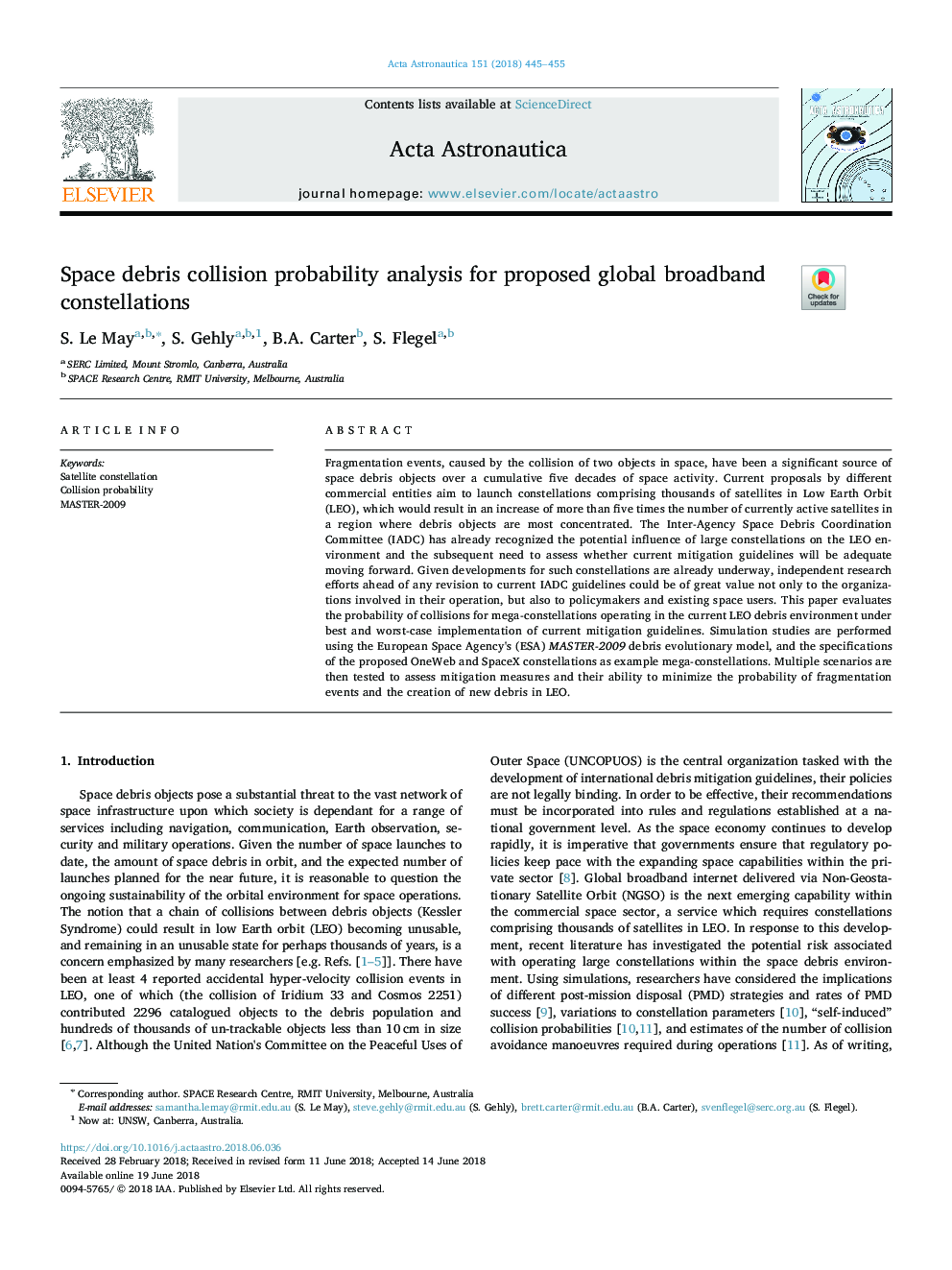| Article ID | Journal | Published Year | Pages | File Type |
|---|---|---|---|---|
| 8055419 | Acta Astronautica | 2018 | 11 Pages |
Abstract
Fragmentation events, caused by the collision of two objects in space, have been a significant source of space debris objects over a cumulative five decades of space activity. Current proposals by different commercial entities aim to launch constellations comprising thousands of satellites in Low Earth Orbit (LEO), which would result in an increase of more than five times the number of currently active satellites in a region where debris objects are most concentrated. The Inter-Agency Space Debris Coordination Committee (IADC) has already recognized the potential influence of large constellations on the LEO environment and the subsequent need to assess whether current mitigation guidelines will be adequate moving forward. Given developments for such constellations are already underway, independent research efforts ahead of any revision to current IADC guidelines could be of great value not only to the organizations involved in their operation, but also to policymakers and existing space users. This paper evaluates the probability of collisions for mega-constellations operating in the current LEO debris environment under best and worst-case implementation of current mitigation guidelines. Simulation studies are performed using the European Space Agency's (ESA) MASTER-2009 debris evolutionary model, and the specifications of the proposed OneWeb and SpaceX constellations as example mega-constellations. Multiple scenarios are then tested to assess mitigation measures and their ability to minimize the probability of fragmentation events and the creation of new debris in LEO.
Related Topics
Physical Sciences and Engineering
Engineering
Aerospace Engineering
Authors
S. Le May, S. Gehly, B.A. Carter, S. Flegel,
